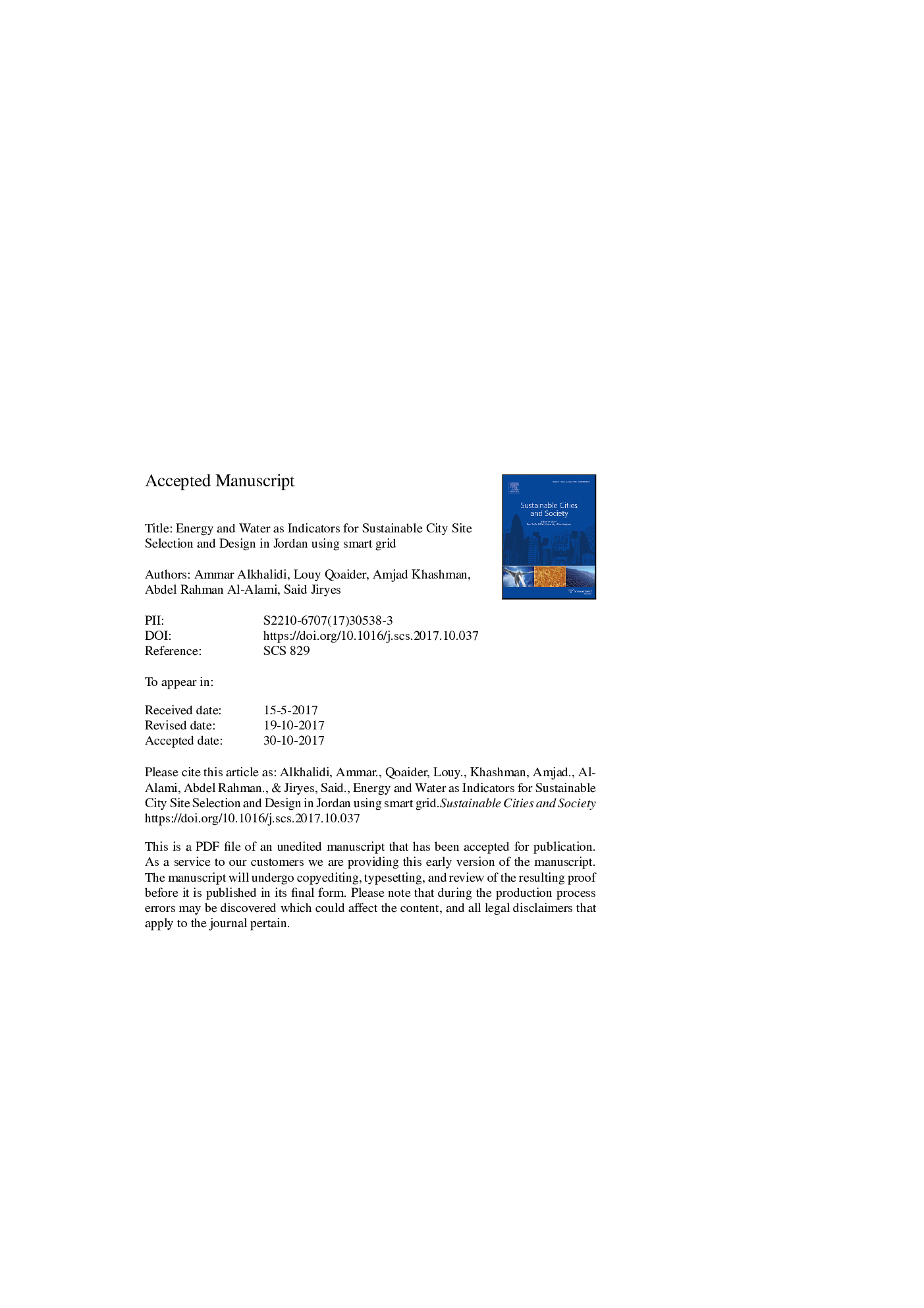| کد مقاله | کد نشریه | سال انتشار | مقاله انگلیسی | نسخه تمام متن |
|---|---|---|---|---|
| 6775697 | 1432011 | 2018 | 19 صفحه PDF | دانلود رایگان |
عنوان انگلیسی مقاله ISI
Energy and water as indicators for sustainable city site selection and design in Jordan using smart grid
ترجمه فارسی عنوان
انرژی و آب به عنوان شاخص برای انتخاب و طراحی سایت پایدار شهر در اردن با استفاده از شبکه هوشمند
دانلود مقاله + سفارش ترجمه
دانلود مقاله ISI انگلیسی
رایگان برای ایرانیان
کلمات کلیدی
NERCSDGTESAqabaLCCMCMKWPVOCCSPNRELFLHLCOEcubic meterIRENARSDs - RSD ها°C - ° CInternational Renewable Energy Agency - آژانس انرژی تجدید پذیر بین المللیReverse Osmosis - اسمز معکوسRenewable energy - انرژی تجدیدپذیرWater supply - تأمین آبGlobal horizontal irradiation - تابش افقی جهانیAlternative Current - جریان متناوبDirect Current - جریان مستقیمThermal energy storage - ذخیره سازی انرژی حرارتیDNI - روزlow carbon city - شهر کربن کمGHI - ضبطConcentrating solar power - غلظت انرژی خورشیدیPhotovoltaic - فتوولتائیکEnvironment - محیط زیستSustainable Development Goal - هدف توسعه پایدارLevelized cost of electricity - هزینه تقسیم برقopen circuit voltage - ولتاژ مدار بازSustainability - پایداریCO2 - کربن دیاکسیدkWh - کیلووات ساعت
موضوعات مرتبط
مهندسی و علوم پایه
مهندسی انرژی
انرژی های تجدید پذیر، توسعه پایدار و محیط زیست
چکیده انگلیسی
The impending scarcity of the available natural resources can be addressed by streamlining sustainable energy sources. The investigation done in this work aimed at the selection of a location and design of a sustainable city in Jordan. The complexity of choosing a location arose due to the semiarid climate coupled with very limited conventional energy resources. In narrowing down the selection process, the authors developed a selection criterion for a sustainable city in Jordan. Based on that criterion, the north of King Hussein International Airport in Aqaba was determined to be the optimal location. This location has exceptional renewable energy resources and is close to the sea. The proposed sustainable city was designed to house 50,000 inhabitants and a total area of 11,128,508Â m2. 26% of this area was used for renewable energy projects, 27.4% for housing, 16.1% area for agricultural use, 21.2% for public and green areas, and 9.3% for waste treatment and industrial zone. Smart grid was utilized to satisfy the energy needs for any sustainable site, which included energy management and storage. The electrical load of the proposed city was estimated based on the domestic and commercial electrical load of the city of Aqaba. The load has a peak of 24.78Â MW and total energy consumption of 122.18 GWh. The city water demand was estimated, domestic water was stored in distributed tanks. A central 5873Â m3 water storage tank was selected for emergency, agricultural, and other uses. Moreover, this tank served as energy storage medium. Since excess energy was used to desalinate water and the desalinated water was stored in this tank. Two-energy generation scenarios were studied, first, the use of CSP parabolic trough with thermal energy storage yielded an LCOE of 0.1697 USD/kWh. Second, the use of a hybrid, PV, and wind, the system with battery storage resulted in an LCOE 0.0748 USD/kWh for full load coverage. However, the LCOE in the city, if it were connected to the Jordanian national grid without battery storage, was estimated to be 0.0344 USD/kWh.
ناشر
Database: Elsevier - ScienceDirect (ساینس دایرکت)
Journal: Sustainable Cities and Society - Volume 37, February 2018, Pages 125-132
Journal: Sustainable Cities and Society - Volume 37, February 2018, Pages 125-132
نویسندگان
Ammar Alkhalidi, Louy Qoaider, Amjad Khashman, Abdel Rahman Al-Alami, Said Jiryes,
